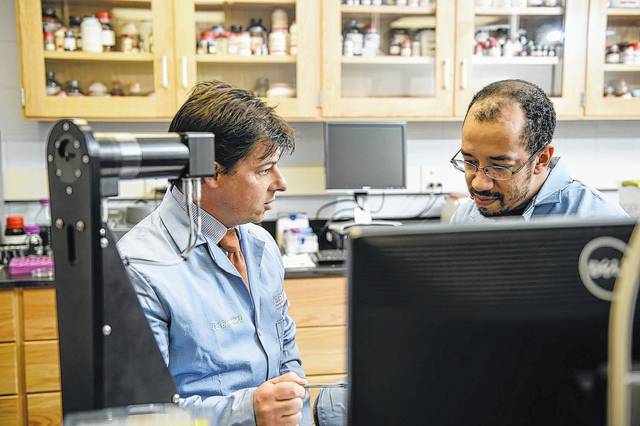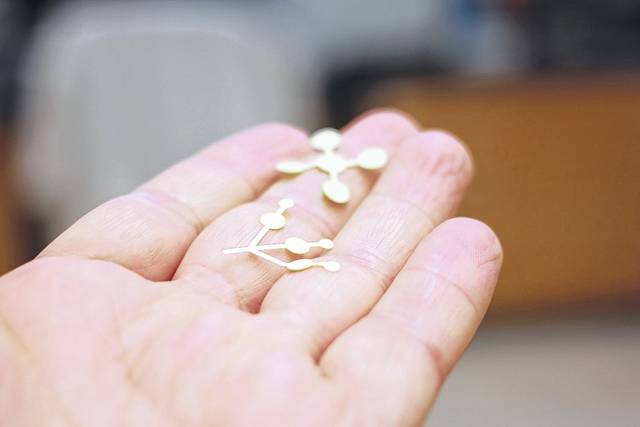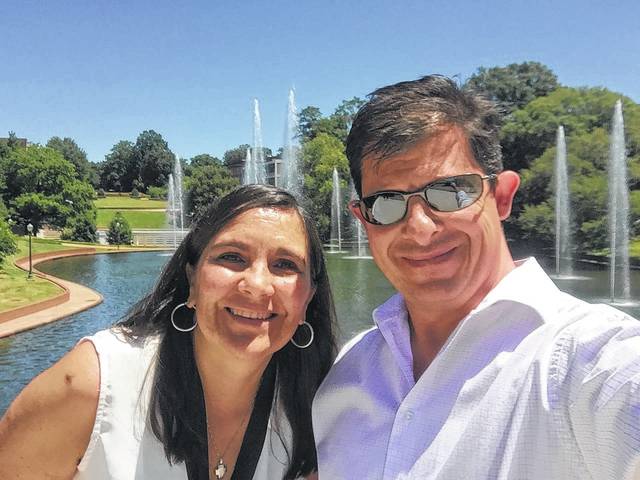CLEMSON – Electronic noses and paper-based biosensors might sound like inventions out of a futuristic drama, but one College of Science researcher is set to make them a reality.
Two research groups in Argentina, along with Carlos Garcia, a professor in the department of chemistry, have received funding from The National Scientific and Technical Research Council (CONICET) to collaborate in these projects. The funding – bestowed by two grants that total $100,000 – allows the Argentinian scientists to make connections with researchers beyond their home country.
Since Garcia is currently participating in two National Science Foundation grants, he qualified for the collaboration. Together, the researchers will work toward the development of two sensory devices for biomedical applications.
The first device – an electronic nose – will use sensing arrays and pattern-recognition technology to detect specific aromatic compounds in the air when kissing bugs are present. Kissing bugs, as part of the triatominae family, are carriers of the parasite that causes Chagas disease (Trypanosoma cruzi).
Endemic especially to northern Argentina and southern Brazil, Chagas disease currently affects an estimated six to seven million people worldwide.
Garcia and his Argentinian collaborator, Carlos Rinaldi, hope that electronic noses could aid in controlling the population of kissing bugs, which would thereby reduce the spread of Chagas disease in these areas. The noses, to be initially developed using laser vaporization, will ultimately mimic human’s sense of smell.
“What we have in our noses is an array of sensors with low selectivity. When we smell perfume, for example, the molecules in that perfume will interact with those sensors, each in a different way. Say, for example, I have five sensors. Each sensor gets a response of 1, 3, 5, 1 and 10. My brain will then interpret that pattern and relate the response to a particular aroma,” Garcia said.
“This works very well with mixtures, or even really simple compounds, like alcohol, because our noses have a lot more than five sensors. So our goal is to develop sensors that will have the capacity to react differently to the aromatic compounds emitted by the kissing bug,” Garcia added.
A computing system would replace the function of the human brain by associating the pattern recognized by the sensors with a particular gas or smell. “Once we have that database, it’s a matter of trying to find the limit of detection, or how low can you go in the concentration of these gases until you get a reliable, positive response,” Garcia said.
The electronic noses are still in an early stage of development, but the second device receiving funding will repurpose a paper-based electrode that Garcia has already originated.
First developed in 2014, Garcia’s paper-based electrode relies on the process of pyrolysis. Greek for “fire separating,” pyrolysis is the process by which carbon-based compounds are heated in the absence of oxygen.
The key to the process is to heat the substrate (paper, in his case) high enough to produce a char-like material, with good electrical properties that preserve the original 3D structure of the paper. Since many of the current electrochemical devices could take advantage of this material, Garcia’s paper-based electrodes could make them accessible to lower-income communities.
The electrode is designed to recognize particular chemicals, and when immersed in solution, the electrode can “sense” whether that chemical is present or not, and – under specific conditions – determine the corresponding concentration.
This biosensing ability was Garcia’s initial purpose for developing the paper-based electrodes, but his collaboration with former colleague, Maria F. Silva of Argentina, has sparked a new direction for the technology.
“Her idea is to use this material for the food industry,” Garcia said. “Because of her location in Argentina, she has an important focus on food chemistry, particularly that of wine and medicinal plants. Mendoza is one of the best areas in the world for wine production, so one of the goals of her research is to boost the economy of that area.”
Silva’s intent is to use the paper-based biosensors as an inexpensive, disposable test for contaminants in foods.
Garcia, who received his Bachelor of Science in biochemistry in 1996 and Doctor of Philosophy in chemistry in 2001 – both from the National University of Cordoba (Argentina) – is excited about the collaboration.
“I love these projects – these are things that we are not doing right now in the lab. It is a great privilege for me to put Clemson on the minds of Argentinian researchers,” Garcia said. “No one in that area has heard about Clemson before, so this is very important for us, as an institution, because it opens the door for recruitment of potential students and researchers.”
The funding provided by CONICET supports the development of the sensors and travel expenses for members of the team, including a visit by Argentinian research groups to Clemson University.



